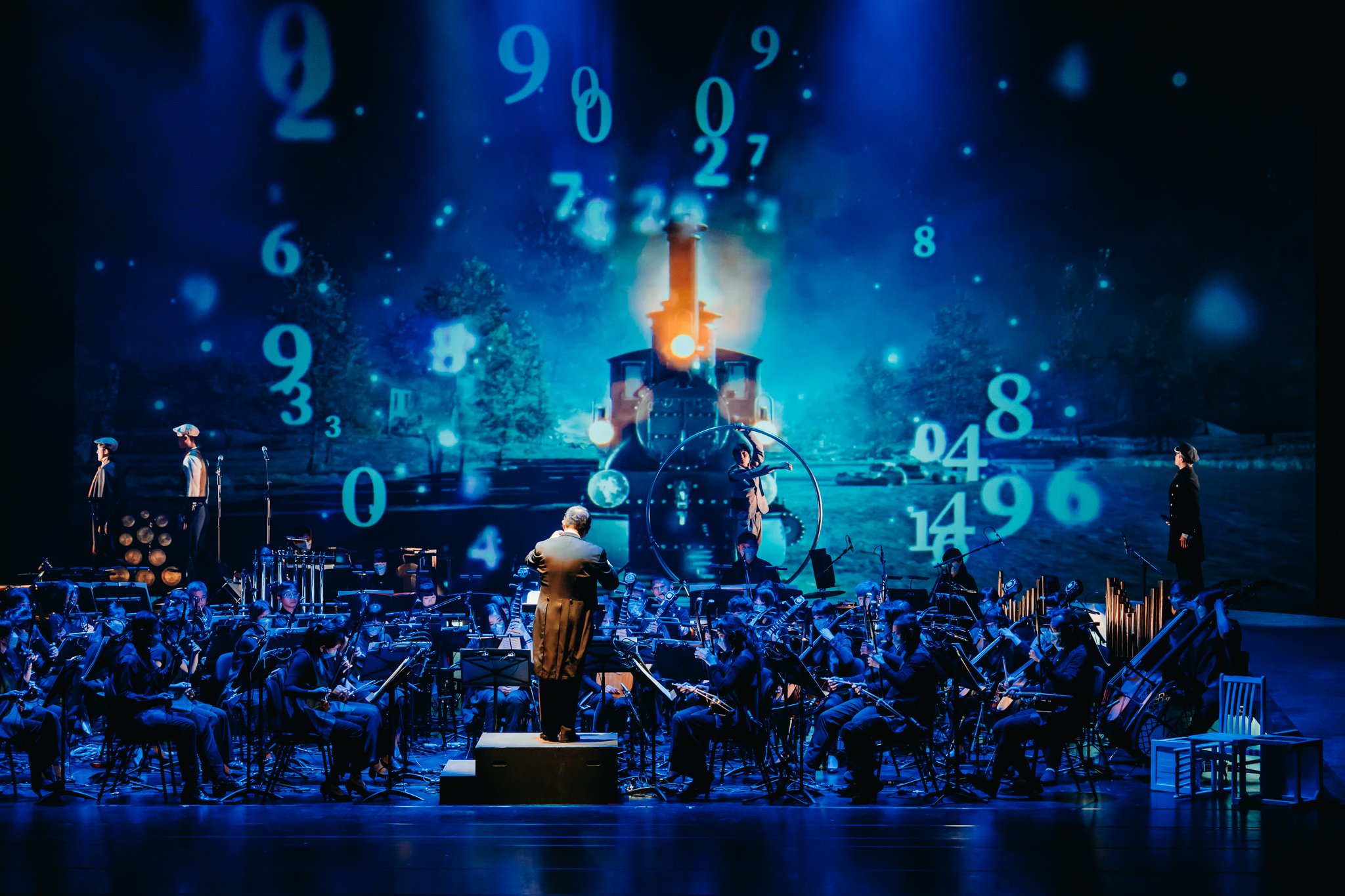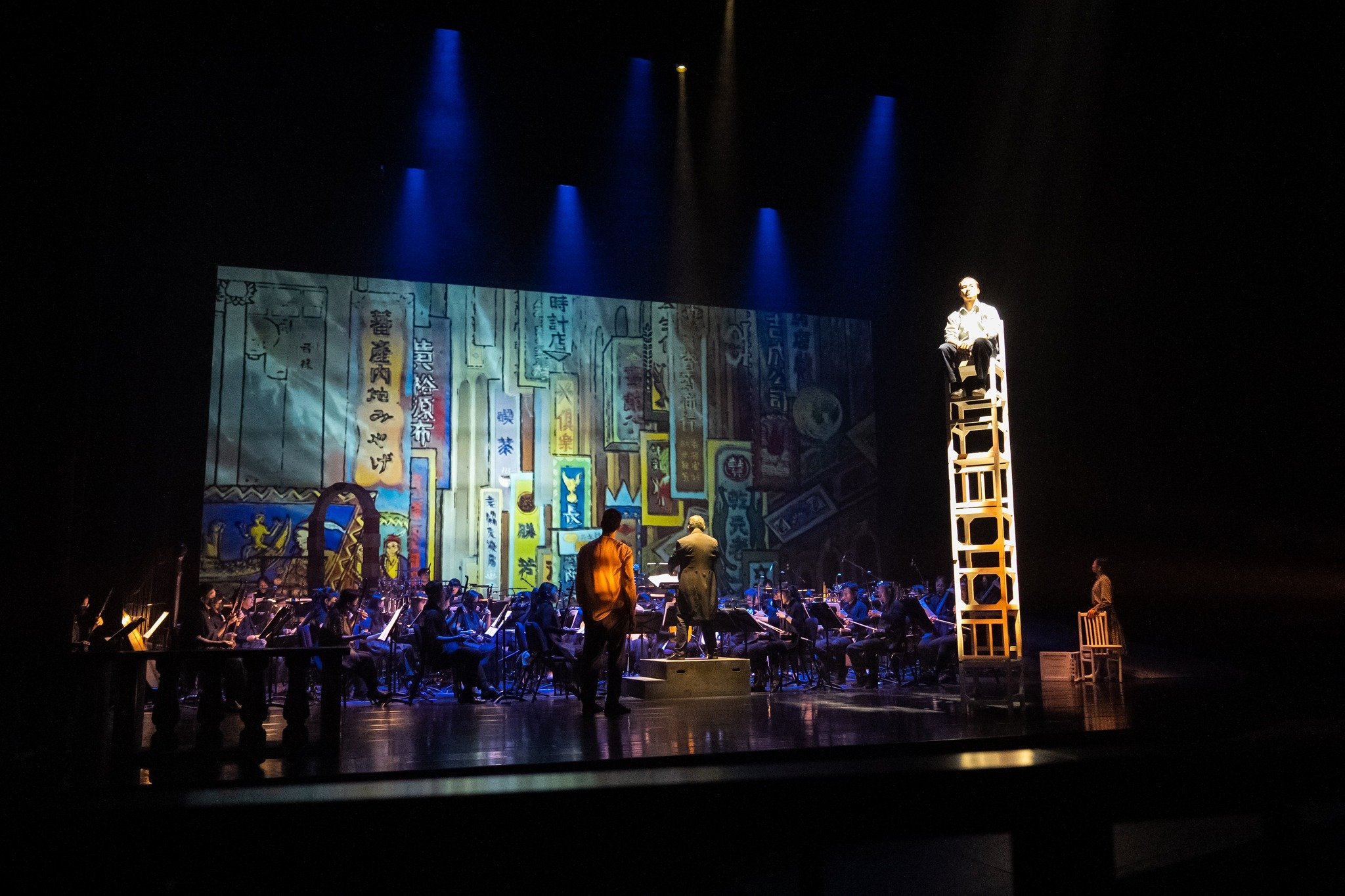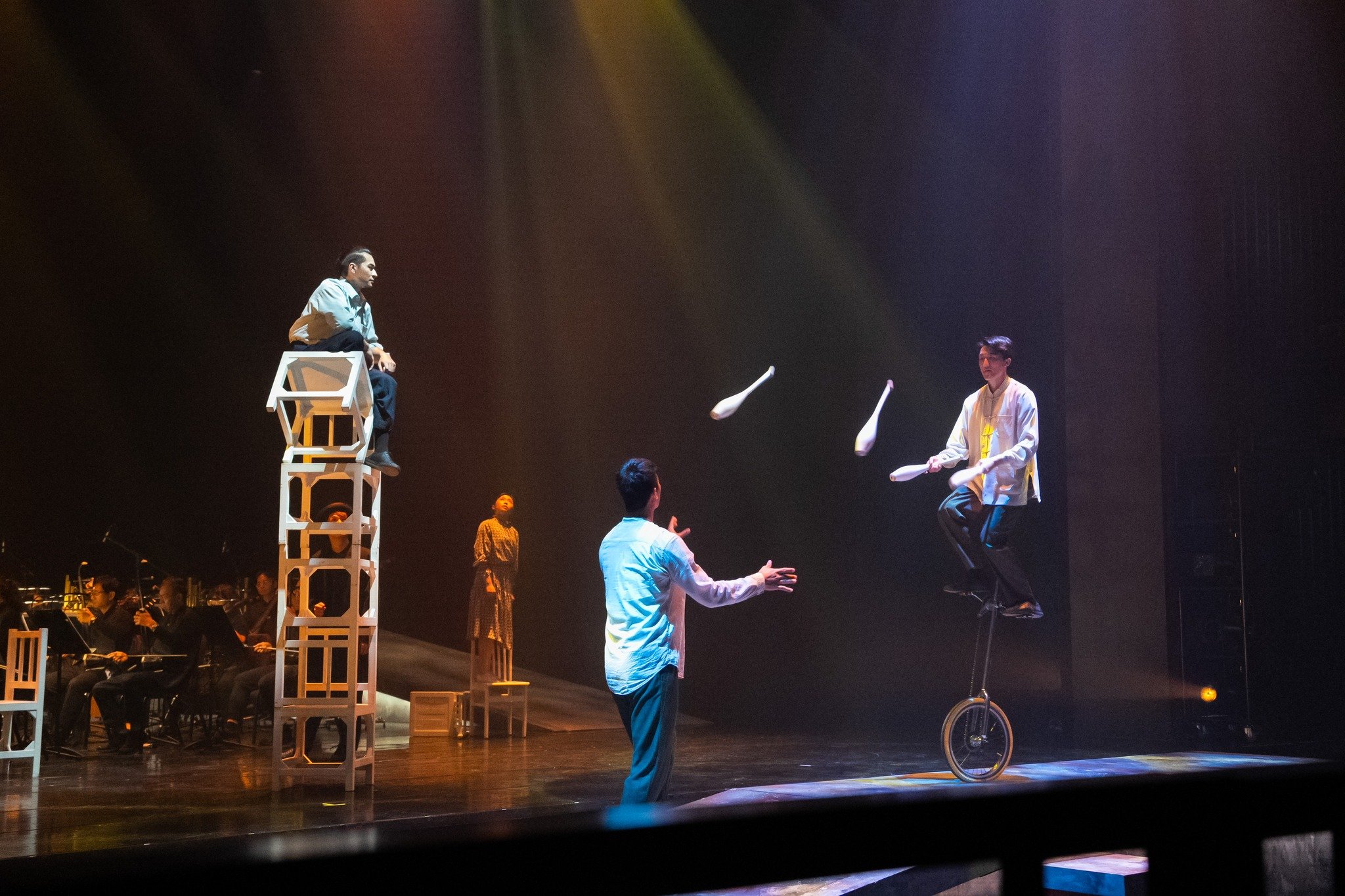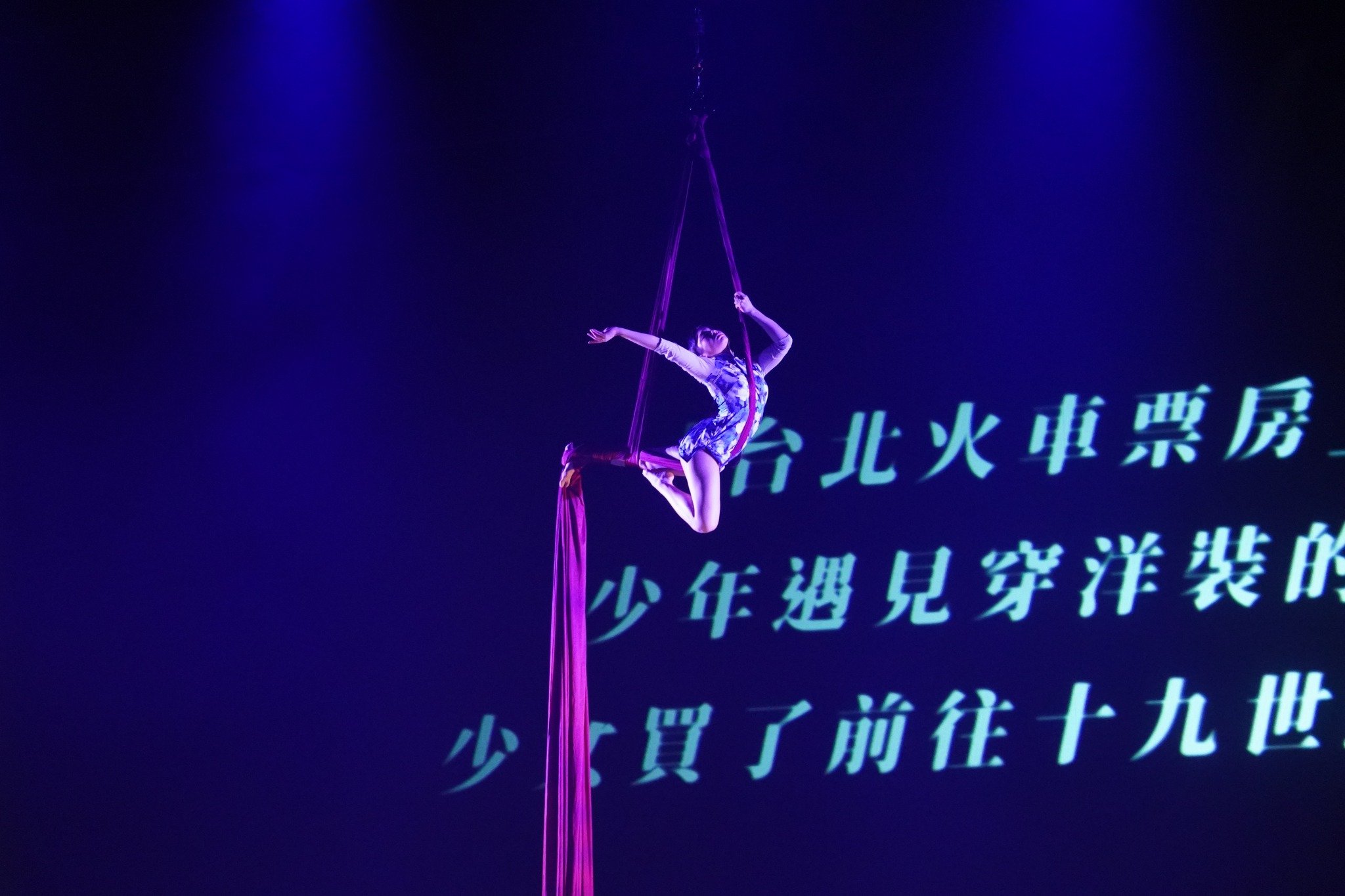A Circus for the Senses: NCO's Musical and Cultural Extravaganza
With their latest production, Journey into Lost Time of TWATUTIA, the National Chinese Orchestra Taiwan (NCO) infuses the elements of circus in traditional Chinese orchestra, whisking the audience away on a captivating voyage through time.
Sense of Wander: ★★★☆☆
In Journey into Lost Time of TWATUTIA, a whimsical locomotive carries the audience on a transcendental voyage, to the time that preceded the rise of Dadaocheng. Image courtesy of National Chinese Orchestra Taiwan.
TAIPEI, Taiwan — With the opening of the Tamsui Harbour in the 19th century, Twatutia, or Dadaocheng, emerged as an economic hub. Its streets adorned with opulent merchant houses, the district of Dadaocheng not only nurtured the city’s cultural development, but also served as the cradle for traditional performing arts.
In their latest production, Journey into Lost Time of TWATUTIA, the National Chinese Orchestra Taiwan (NCO) weaves a spellbinding tapestry of music and circus, immersing the spectators in a bygone era preceding the rise of Dadaocheng.
Before the journey unfolds, a skilled crystal ball performer deftly balances and rolls the immaculate sphere in perfect harmony with the music. The crystal ball, seemingly suspended in the air by an invisible string, captivates the audience, holding their breath in anticipation. Traditionally associated with prophetic visions of the future, this crystal ball, instead, draws us not toward the future, but into the depths of the past.
Enveloped in an enchanting twist of magic, the train officer transports us through time aboard a virtual locomotive. Meanwhile, within the bounds of a colossal Cyr wheel, an acrobat spins. The speed of his rotation accelerates, as if emulating the passage of time. Finally, we alight upon a platform at the Dadaocheng train station. A rare gem of architectural splendor, this European-inspired structure once graced the southern precincts of Dadaocheng’s bustling streets, now known as Chang'an West Road.
A crystal ball performer deftly balances and rolls the sphere in harmony with the music. Image courtesy of National Chinese Orchestra Taiwan.
An acrobat gracefully spins within a colossal Cyr wheel, its rotation emulating the passage of time. Image courtesy of National Chinese Orchestra Taiwan.
We're transported back to the 19th century, witnessing how a young man called Lin Lan-Tian migrated from northern Taiwan and eventually settled in Dadaocheng because of disturbances caused by pirates. Lin is said to have been one of the founders of Dadaocheng's street markets, and it was in 1851 when the commercial hub started to take shape. We also witness a Scottish merchant by the name of John Dodd setting up tea trading posts in the area. He played a significant role in the booming tea trading industry that emerged in Dadaocheng in 1869.
Tea also served as the inspiration for the love story between our two protagonists, who embarked on this time-traveling journey with us. As the tale unfolds, we discover that the lovers were incarnated from the blossoming flower of a tea tree and the tree itself in their previous lives.
We are then transported to Kang San Lau, a four-storey red-bricked building that housed the town's high-end restaurant, becoming the de facto entertainment venue for both merchants and politicians to gather and mingle. As the popular saying goes, “Step into Kang San Lau, feast upon Taiwanese delicacies and be charmed by the geisha's performance.”
Kang San Lau hosted a wide range of performances, including Beiguan, Nanguan, Luantan opera, Peking opera, and other genres of traditional performing arts. But among the variety of shows available, it was often said that if you hadn't seen the geisha perform, you hadn't truly experienced Dadaocheng. In NCO’s interpretation, the role of the geisha is portrayed by a gymnast performing on an extremely long aerial silk. We marvel at the gymnast's ability to execute daring aerial maneuvers without the aid of stage wires, defying gravity and captivating the audience with each of her movement.
Dadaocheng, a vibrant neighborhood adorned with cafes and Western-style architecture, served as a meeting point between Eastern and Western cultures. Among its notable establishments was Bolero, a restaurant established in 1934 that continues to thrive today. Renowned for its delectable French cuisine, including the iconic Canard a'la Francaise aux Rig, as well as its desserts and coffee, Bolero adds to the allure of this eclectic scene. The harmonious fusion of traditional Chinese melodies and Western classical music further enhances the ambience, creating a truly enchanting experience.
Having meticulously stacked the chairs one on top of another, a performer ascends to the top and sits pensively, blending into the backdrop of signboards that decorate the lively high streets of Dadaocheng. Image courtesy of National Chinese Orchestra Taiwan.
An acrobat captivates the audience's gaze as he skillfully juggles pins while maintaining balance on a unicycle. Image courtesy of National Chinese Orchestra Taiwan.
A gymnast performs on aerial silk. Image courtesy of National Chinese Orchestra Taiwan.
The story of Dadaocheng would be incomplete without mentioning the significance of the Xiahai City God Temple, which continues to be a cherished place of worship for both locals and tourists alike. Adjacent to the temple, we find the Ling An Beiguan Troupe, the earliest known music club in Dadaocheng that was established by merchants for the City God parade.
The journey comes to an end with the demolition of the Dadaocheng railway station in 1908. As the magical locomotive departs from the station, we witness its transformation, its sails unfurling like the wings of a fantastical creature, carrying us towards the galaxies beyond. In the final scene, all the acrobats who have graced on stage reenter once again, evoking the sensation of a life flashing before one’s eyes.
Journey into Lost Time of TWATUTIA, initially planned to premiere last year, was postponed to this year due to the pandemic. This grand spectacle encompasses everything one would anticipate in a circus: the mesmerising aerial silk, the captivating Cyr wheel, the skillful monocycle, the astonishing chair acrobatics, and the remarkable duo acrobats.
The National Chinese Orchestra Taiwan (NCO) has a remarkable vision of narrating Taiwan's stories through the medium of Chinese orchestra. With this in mind, I believe Journey into Lost Time of TWATUTIA triumphs in fulfilling this objective. It not only presents the tale of Dadaocheng, but does so in a manner that showcases the diversity of Taiwan's contemporary performing arts scene.
While the show garners widespread acclaim for its remarkable fusion of two art forms seemingly worlds apart — the traditional Chinese orchestra and the circus, I find myself somewhat disappointed with the overall performance.
Contrary to NCO’s production from last year, MacKay the Trekker: A Lover Letter to Formosa (馬偕情書), where members of the orchestra seamlessly took on performer roles, there appears to be a noticeable distance between the music ensemble and the performers in Journey into Lost Time of TWATUTIA. While the music — composed by Wang I-Yu, Chu Yen-Po, and Koji Sakurai — was exceptional, there were instances where it felt as though the orchestra had unfortunately been reduced to mere background music for the narrative.
Devoid of any narration, the storyline unfolds through the use of multimedia video The circus acrobats occasionally take on the role of actors, adding another layer to their performances. However, I frequently caught the performers looking into the distance for no reason, leaving me pondering the object of their fixated gazes.
The stage also felt rather confined, with nearly two-thirds of its space occupied by the orchestra, leaving limited room for the acrobats to shine. At times, I feared that the acrobats may inadvertently collide with the musicians seated at the edge of the ensemble.
Despite these shortcomings, Journey into Lost Time of TWATUTIA remains a good show suitable for families and those who are new to traditional Chinese orchestra. Rest assured, there is no need to fear that the music will lull you to sleep, for the captivating circus performances on stage will keep you wide awake and engaged.
In an ingenious fusion, the National Chinese Orchestra Taiwan (NCO) incooperates elements of the circus into the realm of Chinese orchestra with their production, Journey into Lost Time of TWATUTIA. Image courtesy of National Chinese Orchestra Taiwan.
The National Chinese Orchestra Taiwan (NCO)’s Journey into Lost Time of TWATUTIA was staged at the Taiwan Traditional Theatre Centre in Taipei on April 22 and 23, 2023. The show is part of the 2023 Taiwan Traditional Theatre Festival.







